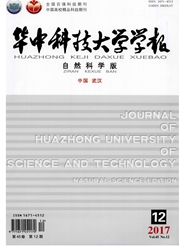

 中文摘要:
中文摘要:
为了实现一定比例错误测量下的目标跟踪,构造了节点与目标的简化模型;在粒子滤波基础上,采用贝叶斯估计获得先验概率;利用前一时刻的位置、速度估计和估计因子,得到每一个在探测范围内的节点到目标的最远和最近距离;再结合节点本身的测量值计算每一粒子相应的权值,然后加权得到范围内节点测量值的可靠性集合,从该集合中选择可靠的测量值作为跟踪估计依据.根据不同的权值计算方法,分为节点关联选择策略和二进制节点选择策略.仿真结果表明:在目标运动速度〈3m/s和错误测量概率〉0.1的情况下,采用节点关联选择策略的RBMCDA算法的跟踪精度优于单纯选择3个较大RSSI值的RBMCDA算法至少1倍.
 英文摘要:
英文摘要:
To solve the target tracking with a certain erratic measurement,a simplified model of the nodes and target was built.According to the particle filter and Bayesian estimation,the prior probability was gotten.And the prior position,the velocity estimated and the estimation factor were used to obtain the farthest distance and the nearest distance from the nodes,whose detection range the target was in to the target.Then the weights of every particle were calculated combining the measurement of nodes,and which were weighted to get the reliability collection of measurement.The credibility measurements were selected from the collection as the base of tracking.The association nodes selection strategy and binary nodes selection strategy were brought in according to the means of calculating weights.Simulation results show that when the velocity is smaller than 3 m/s and the probability of error measurement is larger than 0.1,the tracking accuracy of the RBMCDA(Rao-Blackwellized Monte Carlo data association) algorithm adopting the association nodes selection strategy is 1 times better than the RBMCDA algorithm which selects the 3 bigger RSSI(received signal strength indication) value.
 同期刊论文项目
同期刊论文项目
 同项目期刊论文
同项目期刊论文
 期刊信息
期刊信息
